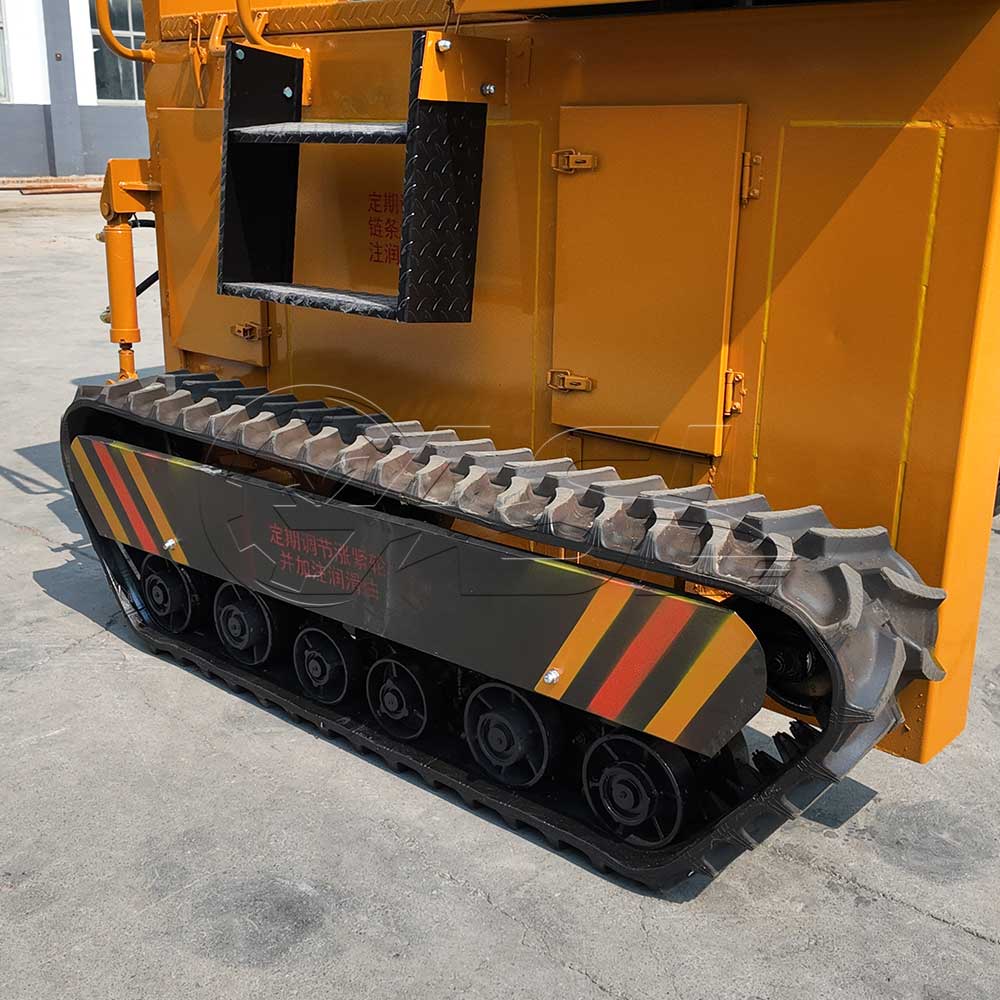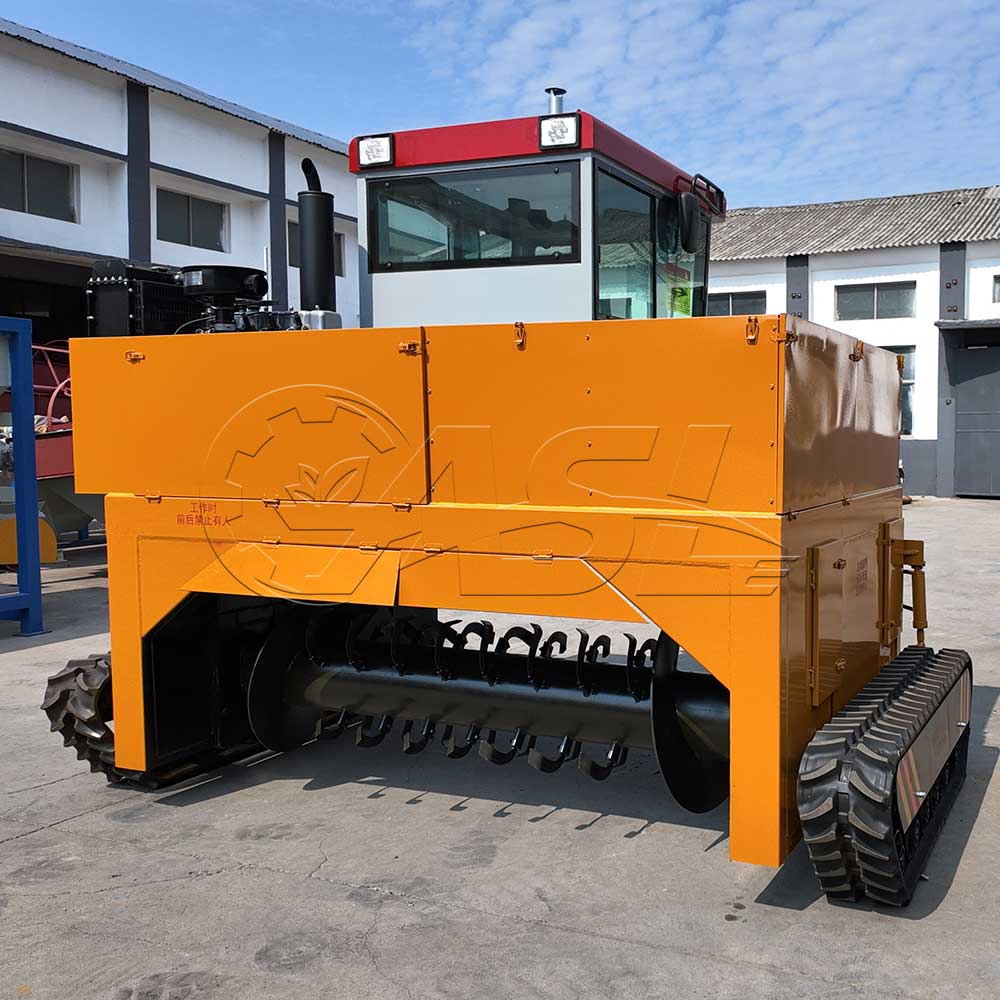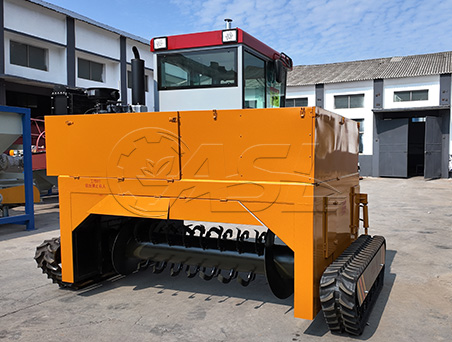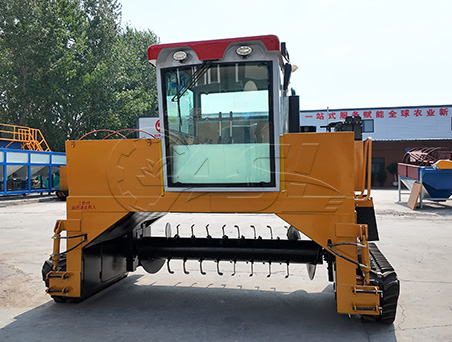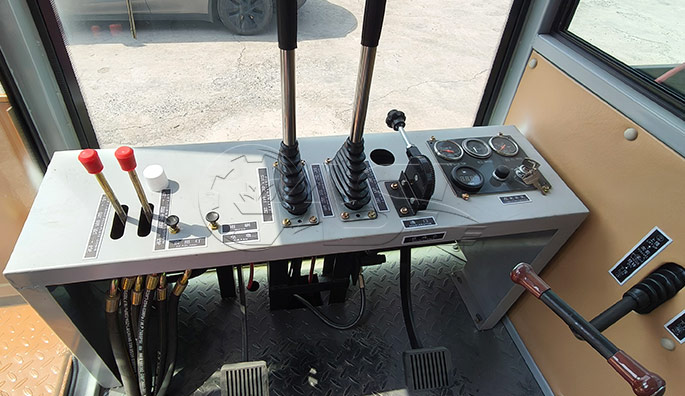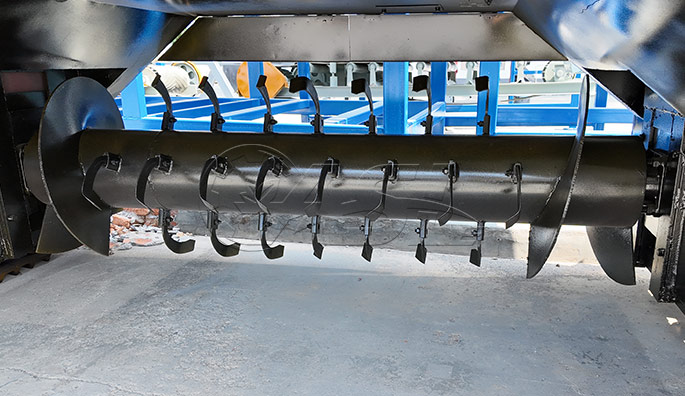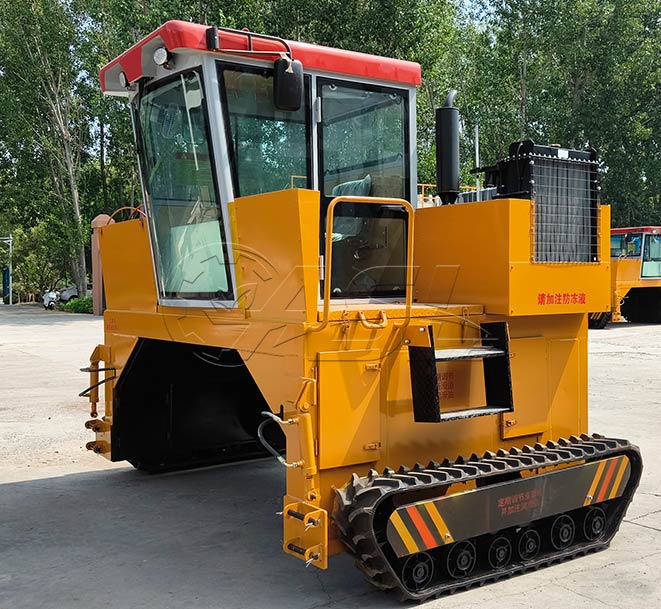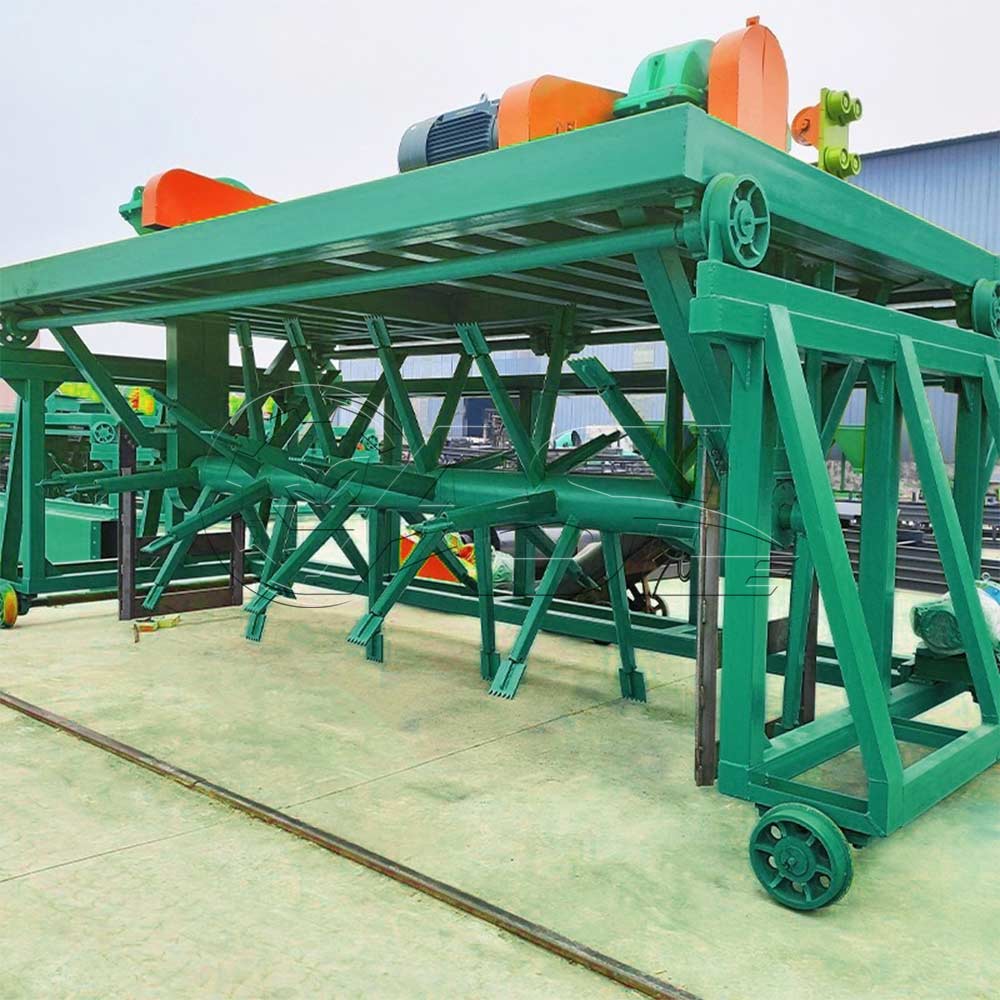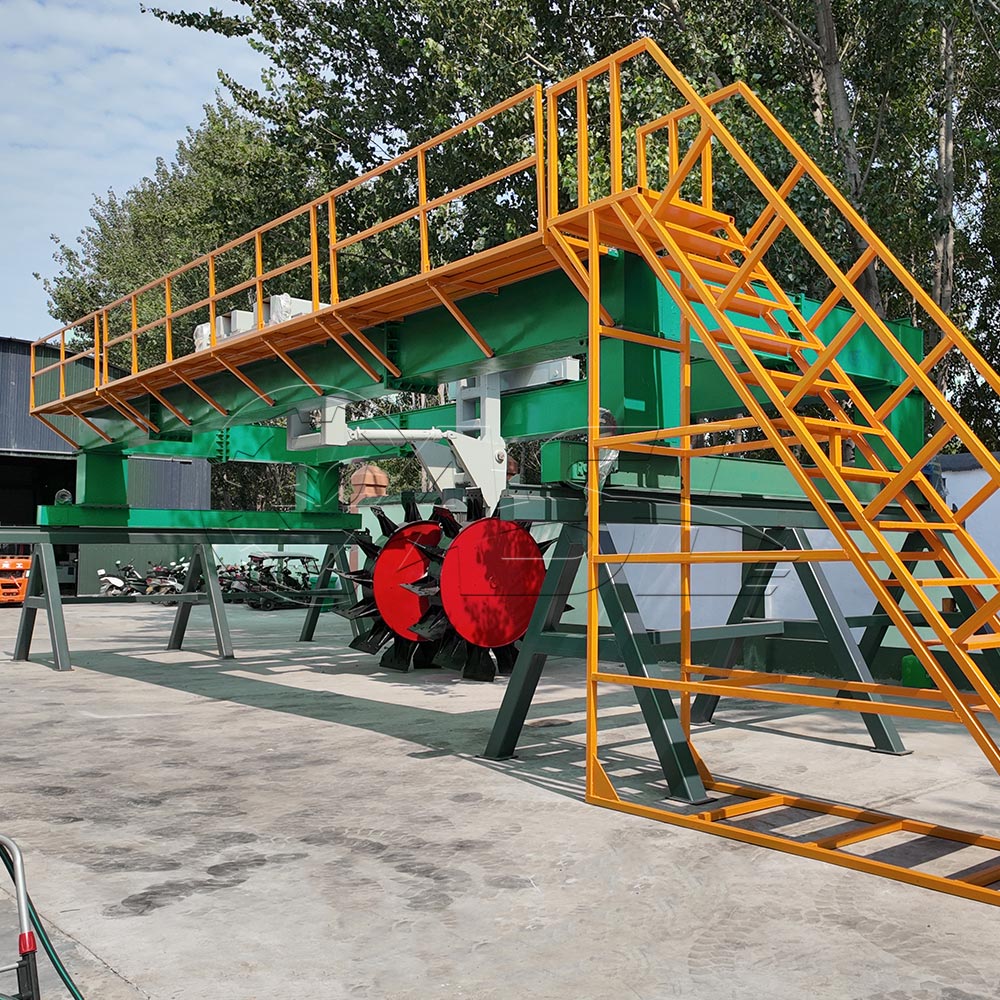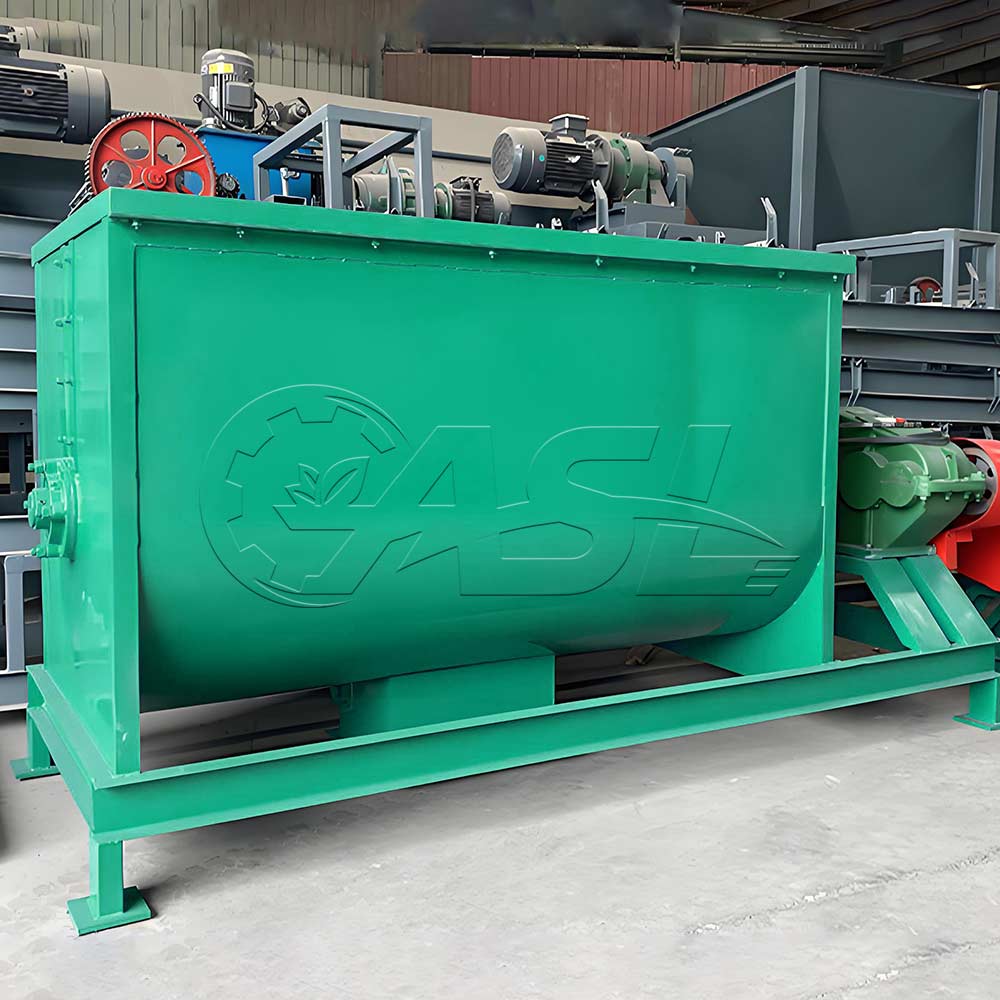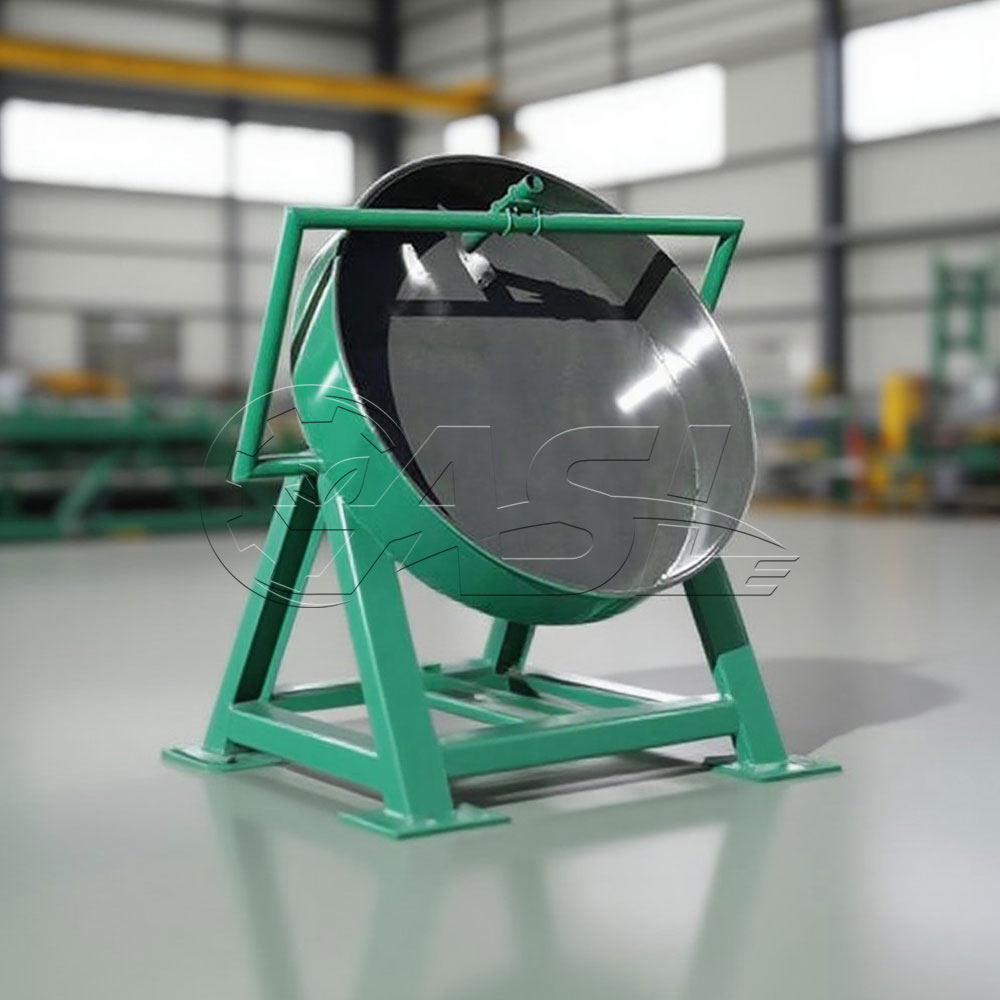What materials are suitable for fermentation processing using crawler compost turners for organic fertilizer?
Crawler compost turners have a wide range of applications and can process a variety of organic waste, including livestock and poultry manure (such as chicken, cow, and pig manure), crop straw, sludge, distiller's grains, mushroom residue, medicinal residue, and sugar residue. For example, on large farms, they can efficiently process large quantities of livestock and poultry manure. In areas with abundant straw resources, straw can be mixed with manure and fermented to convert it into high-quality organic fertilizer. Their crawler design allows them to adapt to a variety of material conditions, ensuring stable operation, from moist sludge to fluffy straw mixtures.
What are the advantages of crawler compost turners over wheeled compost turners?
The advantages of crawler compost turners primarily lie in their adaptability to site conditions. Tracks have a large contact area with the ground, resulting in a low ground pressure. This makes them less likely to get stuck in muddy, soft composting areas (such as freshly piled wet manure piles or areas after rain), giving them greater maneuverability. Wheeled compost turners, on the other hand, are prone to slipping or sinking in such areas. Furthermore, tracked compost turners offer greater stability, resulting in less vibration during turning, reducing uneven material distribution caused by machine sway. They are particularly suitable for handling deep, high-resistance piles.
Is a tracked compost turner difficult to operate? Does it require professional training?
Crawler compost turners are relatively easy to operate. Modern machines are often equipped with hydraulic control systems and intuitive control panels. Operators use joysticks or buttons to control forward and reverse movements, steering, and raising and lowering the turning gears. However, to ensure safety and efficiency, brief training is recommended, covering the basic principles of the equipment, operating procedures, and safety precautions (such as avoiding close proximity to the turning gears while the machine is operating and shutting down the machine and powering off in the event of a malfunction). Generally speaking, individuals with basic machine operation experience can become proficient in operation after one to two days of training.
What are the common faults that can occur with a crawler compost turner during operation? How can they be addressed?
Loose or derailed tracks: This is often caused by insufficient track tension or worn track shoes. Solution: Regularly check track tension and adjust using the tensioning device. If the track shoes are severely worn, replace them promptly.
Damaged turning teeth: This may be caused by hard objects such as rocks or metal mixed into the material, or by prolonged overload operation. Solution: Clean any hard objects from the material before operation. Damaged turning teeth should be replaced promptly to avoid affecting the overall turning performance.
Hydraulic system oil leakage: This is often caused by aging oil pipe joints or seals. Solution: Stop the machine, inspect the leak, replace any aging seals or tighten the joints, and replace the oil pipes if necessary.
What maintenance and maintenance aspects should be considered when using a crawler compost turner?
Daily maintenance focuses on the following:
① Tracks: Regularly clean the tracks of dirt and weeds, inspect the track shoes and pins for wear, and add grease.
② Hydraulic system: Regularly check the hydraulic oil level and quality, replenish or replace as needed, and clean the hydraulic oil filter.
③ Turning gears and transmission components: Check the turning gear mounting bolts for looseness and the lubrication of the transmission chain or gears, tighten them promptly, and add lubricant.
④ Engine: Regularly replace the engine oil and filter according to the manual, and check the fuel and cooling systems. A simple inspection is recommended after daily operation, and a comprehensive maintenance is performed weekly.


